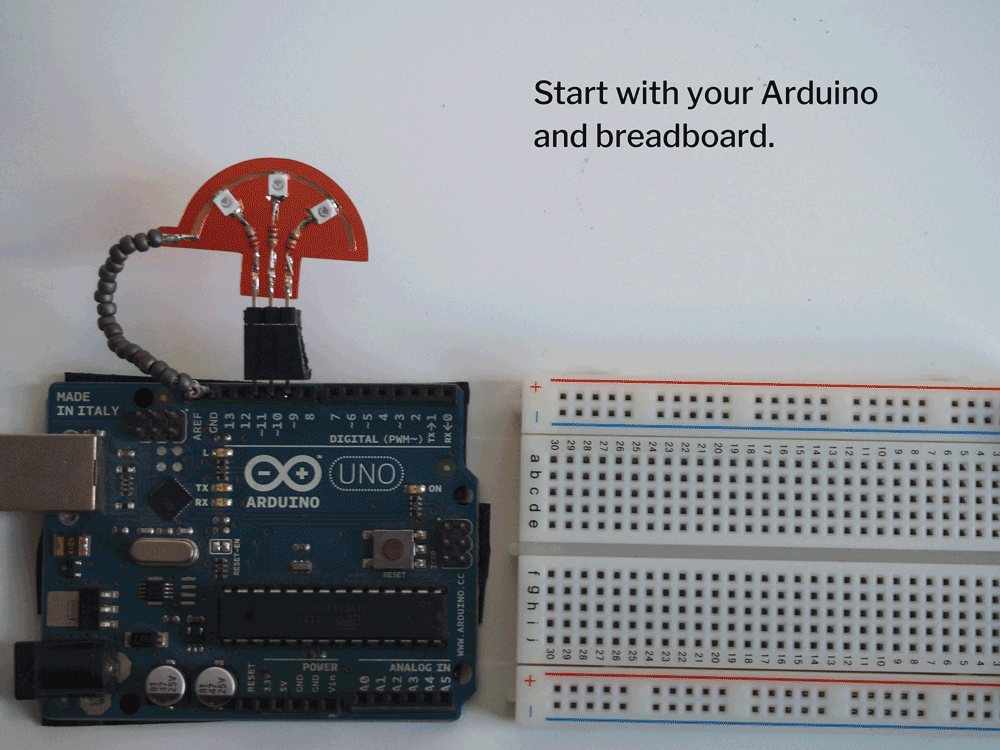E-textiles#
Program#
Introduction (10 min)#
- Why soft, why embedding
What is electricity? (15 min)#
- What is a circuit
- How does electricity move
- Voltage, Resistance, Current
- LEDs
Conductive materials (10 min)#
- Fabrics - resistive/conductive
- Threads - resistive/conductive
- Inks - resistive/conductive
Tools (10 min)#
- Vinyl cutter, laser, embroidery, machine sewing
- Multimeter, soldering iron
Hard/soft connections (10 min)#
- Machine-sewable Hard/Soft Connections
- crimp beads
- Perfboard/Conductive thread
- Metal machine popper/Conductive fabric
- Hand sewable metal popper/Conductive thread
- Wire/Conductive fabric (soldering)
- Wire/Conductive thread (soldering)
Soft sensors (35 min)#
- Digital
- Switches - momentary/toggle
- Tilt
- Joystick
- Stroke
- Analog
- Pressure sensor ( analog input example)
- Potentiometers
- Stretch sensors - fabric/knit
- Bend sensors
- Accelerometer
Programming (60 min)#
- Intro to microcontrollers and board computers
- Connecting to the microcontroller
- Reading code
- Sensor circuits
- voltage dividers
- pull up/down resistors
- Normally on/off LED - how to switch that in the code
- Tips for making data meaningful
Learning outcomes#
- Understand how we can produce soft circuits, sensors and actuators
- Learn how to embed them in garments, soft objects or wearables
- Study and learn soft-hard connections
- Discover necessary materials, components, tools
- Explore and replicate existing projects
ASSIGNMENT#
- Build at least one digital and one analogue soft sensors, using different materials and techniques.
- Document the sensor project as well as the readings got using the AnalogRead of Arduino
- Integrate the two soft sensors into one or two textile swatches using hard soft connections
- Document the circuit and it’s schematic
- Document your swatches
- Upload a small video of the swatches functioning
- EXTRA POINT Integrate the swatch into a project
How will it be evaluated?#
- References : tutorial , links, ideas
- Design : program your arduino sketch , design your circuit and schematic
- Fabrication : craft your soft sensors
- Documentation : Anyone can go through the process and understand
- Final outcome : Is the project assembled, functioning and complete
- Originality - Aesthetics : Has the design been thought through and elaborated
Lecture Notes#


Here you can find Liza´s resources on her soft circuiter webpage
Resources#
MATERIALS
eTextile Summer Camp 2016 Material Library
How to Work with Conductive Fabric by Lara Grant
CONNECTIONS
Connection category from Kobakant
SENSORS
Curated Collections
Textile Sensor Demos for Summer School
School of Wicked Fabrics: Foundation /02
Switches
Momentary
Toggle
Tilt
Stroke
Sensors
Pressure
Simple Fabric Pressure Sensors
Neoprene Pressure Sensor Matrix
Bend
Potentiometer
Stretch
Accelerometer
CODE
Basic
Making Your Data Meaningful